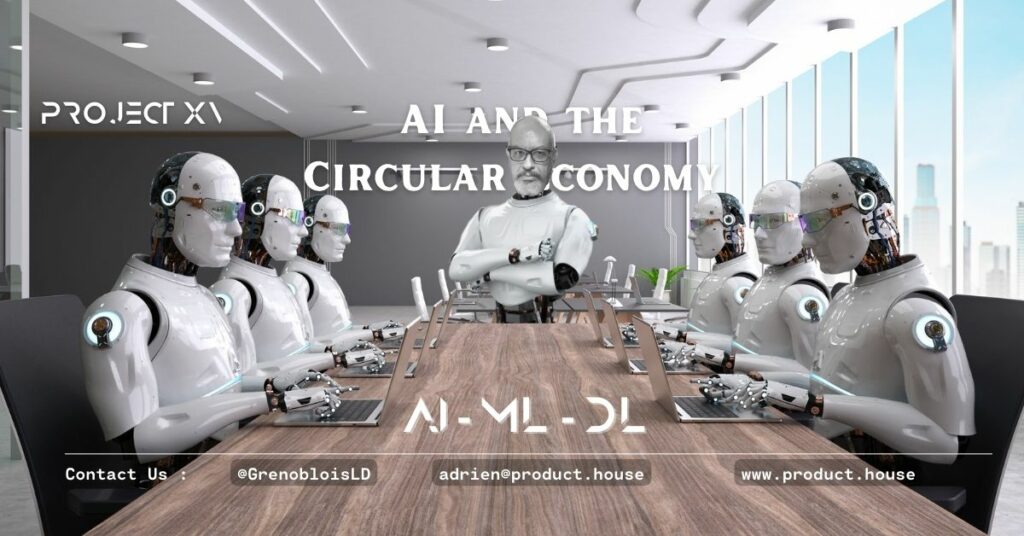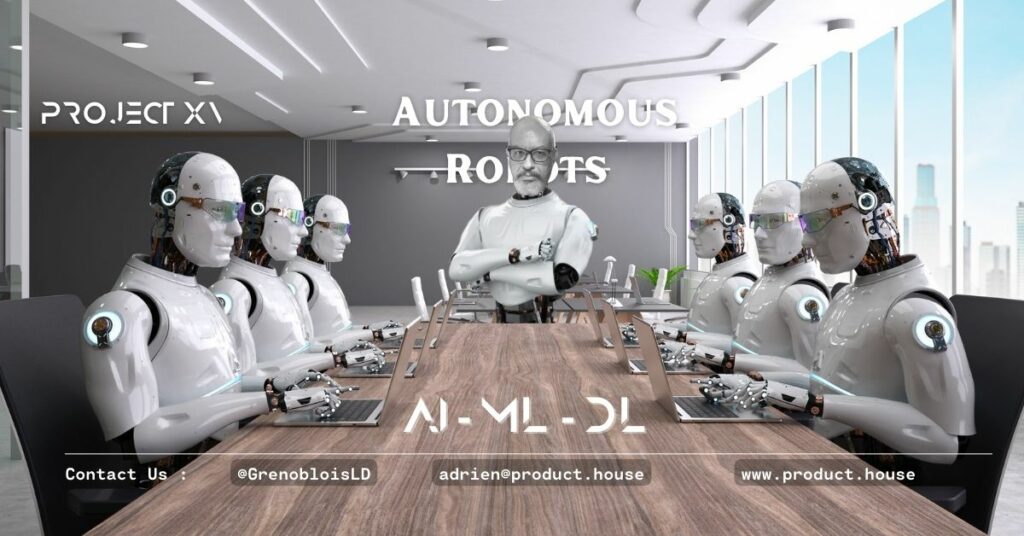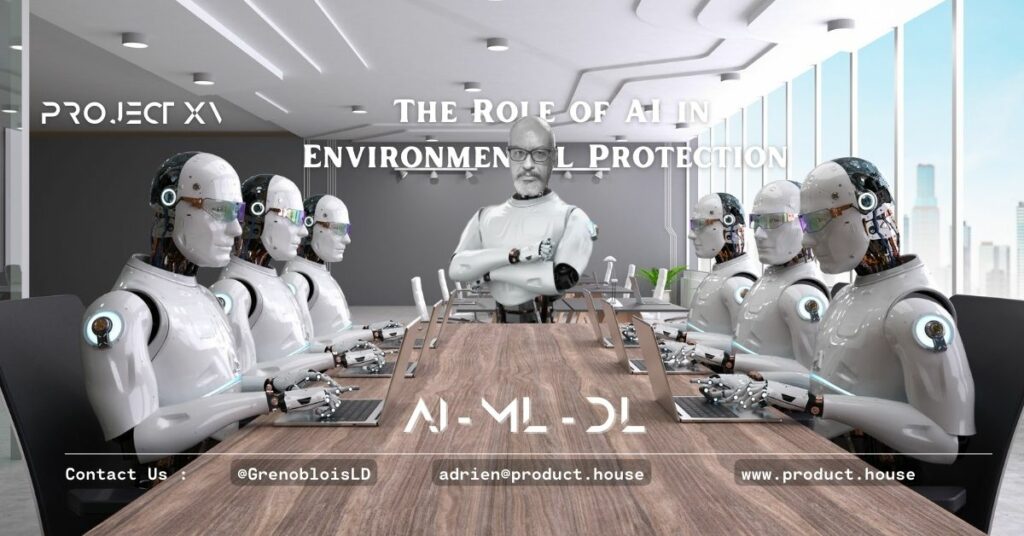AI and the Circular Economy: Reducing Waste and Improving Resource Efficiency

The circular economy is an economic model that emphasizes minimizing waste and maximizing resource efficiency. It involves designing products and processes to be reused, repaired, or recycled instead of being thrown away after a single use. The circular economy has the potential to help us address the environmental challenges we face by reducing waste and conserving resources. Artificial intelligence (AI) is one technology that can help us transition to a circular economy by improving resource efficiency, reducing waste, and promoting sustainability.
- Predictive Maintenance Predictive maintenance is the use of AI to predict when equipment will fail, allowing for timely maintenance and repair. By optimizing maintenance schedules, businesses can reduce downtime and extend the lifespan of equipment, ultimately reducing waste.
- Waste Management AI can be used to optimize waste management systems by providing insights into waste generation, collection, and disposal. For example, AI-powered robots can sort and separate recyclable materials, increasing the efficiency of recycling processes.
- Product Design AI can help designers create products that are more easily repaired, recycled, or reused. By using AI to analyze product designs, designers can identify opportunities to improve resource efficiency and reduce waste.
- Supply Chain Optimization AI can be used to optimize supply chain operations, reducing waste and promoting sustainability. For example, AI can be used to optimize inventory levels, reducing the amount of excess inventory that is produced and ultimately wasted.
- Energy Optimization AI can be used to optimize energy use, reducing waste and promoting sustainability. For example, AI can be used to predict energy demand, identify energy inefficiencies, and automate energy management systems.
In addition to these examples, there are various other ways in which AI can help us transition to a circular economy. However, there are also some challenges that must be addressed in order to fully leverage the potential of AI in this context. These challenges include:
- Data quality: High-quality data is necessary for AI to function effectively, and obtaining and maintaining such data can be challenging.
- Implementation costs: Implementing AI technologies can be expensive, which may deter some businesses from investing in them.
- Technical expertise: Developing and deploying AI systems requires specialized technical expertise that may be difficult to obtain.
- Ethical concerns: As with any technology, there are ethical concerns associated with AI, such as the potential for biases to be built into AI systems.
Despite these challenges, the potential benefits of AI in the circular economy are significant. By leveraging AI to improve resource efficiency, reduce waste, and promote sustainability, we can work towards a more sustainable and environmentally friendly future.
Additional Resources:
- The Ellen MacArthur Foundation: A nonprofit organization dedicated to promoting the circular economy.
- Circular IQ: A software company that offers circular economy solutions.
- The Circulars: An awards program that recognizes businesses and organizations for their contributions to the circular economy.
Book Recommendations:
- “Circular Economy: A Handbook for Business and Supply Chains” by Catherine Weetman
- “The Circular Economy: A Wealth of Flows” by Ken Webster
Conclusion
AI has the potential to play a significant role in transitioning to a circular economy by improving resource efficiency, reducing waste, and promoting sustainability. While there are some challenges associated with the implementation of AI in this context, the potential benefits are significant. By leveraging AI and other technologies, we can work towards a more sustainable and environmentally friendly future.
FAQs
- What is the circular economy? The circular economy is an economic model that emphasizes minimizing waste and maximizing resource efficiency by designing products and processes to be reused, repaired, or recycled instead of being thrown away after a single use.
- What is AI’s role in the circular economy? AI can help us transition to a circular economy by improving resource efficiency, reducing waste, and promoting sustainability. Examples include predictive maintenance, waste management, product design, supply chain optimization, and energy optimization.
- What are some challenges associated with implementing AI in the circular economy? Challenges include data quality, implementation costs, technical expertise, and ethical concerns such as biases built into AI systems.
- How can businesses leverage AI to become more sustainable? Businesses can leverage AI to become more sustainable by optimizing their supply chains, reducing waste, improving product design, and optimizing energy use.
- What are some examples of AI in waste management? AI can be used to optimize waste management systems by providing insights into waste generation, collection, and disposal, and using robots to sort and separate recyclable materials.
- How can AI be used to improve energy efficiency? AI can be used to predict energy demand, identify energy inefficiencies, and automate energy management systems.
- How can product designers use AI to create more sustainable products? Designers can use AI to analyze product designs and identify opportunities to improve resource efficiency and reduce waste.
- What is the Ellen MacArthur Foundation? The Ellen MacArthur Foundation is a nonprofit organization dedicated to promoting the circular economy.
- What is Circular IQ? Circular IQ is a software company that offers circular economy solutions.
- What are the Circulars? The Circulars is an awards program that recognizes businesses and organizations for their contributions to the circular economy.
Reminders
When using AI in the circular economy, it is important to prioritize sustainability and responsible use. Additionally, businesses should consider potential risks and collaborate between industry, government, and academia to ensure that AI is used in a sustainable and responsible manner.
Resources
- The Ellen MacArthur Foundation: A nonprofit organization dedicated to promoting the circular economy.
- Circular IQ: A software company that offers circular economy solutions.
- The Circulars: An awards program that recognizes businesses and organizations for their contributions to the circular economy.
Book List
- “Circular Economy: A Handbook for Business and Supply Chains” by Catherine Weetman
- “The Circular Economy: A Wealth of Flows” by Ken Webster
Examples
- AI-powered robots that sort and separate recyclable materials.
- AI systems that predict when equipment will fail, allowing for timely maintenance and repair.
- AI systems that analyze product designs to identify opportunities for resource efficiency and waste reduction.
Glossary
- Circular economy: An economic model that emphasizes minimizing waste and maximizing resource efficiency.
- Predictive maintenance: The use of AI to predict when equipment will fail, allowing for timely maintenance and repair.
- Supply chain optimization: The use of AI to optimize supply chain operations, reducing waste and promoting sustainability.
- Energy optimization: The use of AI to optimize energy use, reducing waste and promoting sustainability.
Quiz
- What is the circular economy?
- What is AI’s role in the circular economy?
- What are
- some challenges associated with implementing AI in the circular economy? 4. How can businesses leverage AI to become more sustainable?
- What are some examples of AI in waste management?
- How can AI be used to improve energy efficiency?
- How can product designers use AI to create more sustainable products?
- What is the Ellen MacArthur Foundation?
- What is Circular IQ?
- What are the Circulars?
Answers
- The circular economy is an economic model that emphasizes minimizing waste and maximizing resource efficiency by designing products and processes to be reused, repaired, or recycled instead of being thrown away after a single use.
- AI can help us transition to a circular economy by improving resource efficiency, reducing waste, and promoting sustainability. Examples include predictive maintenance, waste management, product design, supply chain optimization, and energy optimization.
- Challenges include data quality, implementation costs, technical expertise, and ethical concerns such as biases built into AI systems.
- Businesses can leverage AI to become more sustainable by optimizing their supply chains, reducing waste, improving product design, and optimizing energy use.
- AI can be used to optimize waste management systems by providing insights into waste generation, collection, and disposal, and using robots to sort and separate recyclable materials.
- AI can be used to predict energy demand, identify energy inefficiencies, and automate energy management systems.
- Designers can use AI to analyze product designs and identify opportunities to improve resource efficiency and reduce waste.
- The Ellen MacArthur Foundation is a nonprofit organization dedicated to promoting the circular economy.
- Circular IQ is a software company that offers circular economy solutions.
- The Circulars is an awards program that recognizes businesses and organizations for their contributions to the circular economy.




